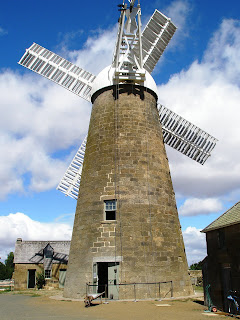 |
| Beautiful Lake Pedder. |
From strolling through one of Australia’s oldest botanic gardens, to flying in a light aircraft to Tasmania’s south-west wilderness, and now settled into a National Park campground east of Lake Pedder and Lake Gordon. . . we’ve had a wonderful few days.
It DID rain for our lunch with John’s old friend at the Royal Tasmanian Botanic Gardens, but it cleared away as we ate at The Gardens restaurant, and we were able to prowl around later, enjoying the ambience of the gardens, established in 1818.
Interestingly, Marcus (John’s friend and former bonsai teacher) told us that while a good deal of the garden’s infrastructure had been built by convicts, in fact it has had a continuous labour force of convicts and still has day-release prisoners from near Hobart who work in it.
We had based ourselves at the Hobart Showgrounds motorhome park, still not completely equipped with power and water supplies as any normal caravan park, and it became a bit of a circus when people starting arriving from all over for the annual Horse of the Year event over the Australia Day weekend.
Not only did they have horse floats from which the prized horses stepped into stables, some had massive trucks with horse accommodation at the rear and small motorhome arrangements just behind the cab, so they were parked all around us. The most innovative was a former horse float which had been completely turned into living quarters for a mother and her 2 daughters.
We left all the horsey folk behind on the Sunday when we had a flight from Hobart to Melaleuca organized. We’d seen walkers staggering into campgrounds at Cockle Creek when we were there, having taken 7 days to do the South Coast Walk. We became fascinated by the area, and bought a book about it. The walkers are flown to Melaleuca, then walk out, and in reading that detail we found the same light aircraft company also did day trips, including walking around that area and a boat trip on the nearby Bathurst Harbour.
So . . . off we flew, with two other couples, for a magical day. A man called Deny King had mined tin in the Melaleuca area for years and he had laboriously built the airstrip among the button grass plains. His house is still there and family members come down for a month once a year to try to keep it all together, but the whole area is now a national park.
 |
| The boat in which we toured the waterways, beached where we had lunch. |
Our pilot wore several hats, as a tour guide and also qualified coxswain, as it was he who took us out in a small boat to tour the creek and inlet that lead to the harbour and eventually out to sea. He had promised us lunch and we thought it would just be a sandwich in the boat, but he took us to a glorious little beach, set up a table with salads, smoked salmon, cheeses and bottles of some of Tasmania’s best wines. When we returned to the airstrip area we were taken to a bird hide where we were lucky enough to see one of the orange-bellied parrots, highly endangered, that summer in the area. It is hoped numbers will increase and there’s much excitement about some fledglings recently spotted.
So home we flew in the late afternoon, this time across the island rather than around its south coast, so we were rubbing shoulders with great peaks and looking down at some of the tarns, little lakes high in the mountains.
 |
| The airstrip at Melaleuca, with paths through the peatland visible. |
Today we saw much bigger lakes near Strathgordon, Lake Pedder and Lake Gordon. The engineering that built the fabulous Gordon Dam curved wall is amazing, as is the underground power station that uses the water from the linked dams to generate 13% of Tasmania’s electricity.
While we were gaping at the Gordon Dam wall, an employee started descending the outside of it in a cable car, which seemed to hover on a curve, then plunged straight down! We didn’t wait around long enough to see him come up again but felt lucky to have even seen that dramatic plunge.
 |
| The worker's cable car hovers before plunging into the gorge in front of the dam. |
The mountains are splendid and photographs just do not do them justice, but we kept stopping to try.
By late afternoon we had left the lakes and mountains behind and were in the Mt Field National Park campground, among gloriously tall straight trees, feasting on the raspberries, blackberries and cherries that we’d bought along the way this morning.
Sadly, the raspberries seem to be almost finished; the apricots are down to their last few weeks, as are the cherries; but the blackberries are just starting. The ones we bought today were cultivated in an orchard, but the roadsides are full of rapidly ripening blackberries on fences, though avoiding the thorns could be a problem.
Now we have a couple of days to enjoy the way west on the Lyell Highway at leisure, as we’re due in Strahan on Thursday for more excursions by boat and train.

















